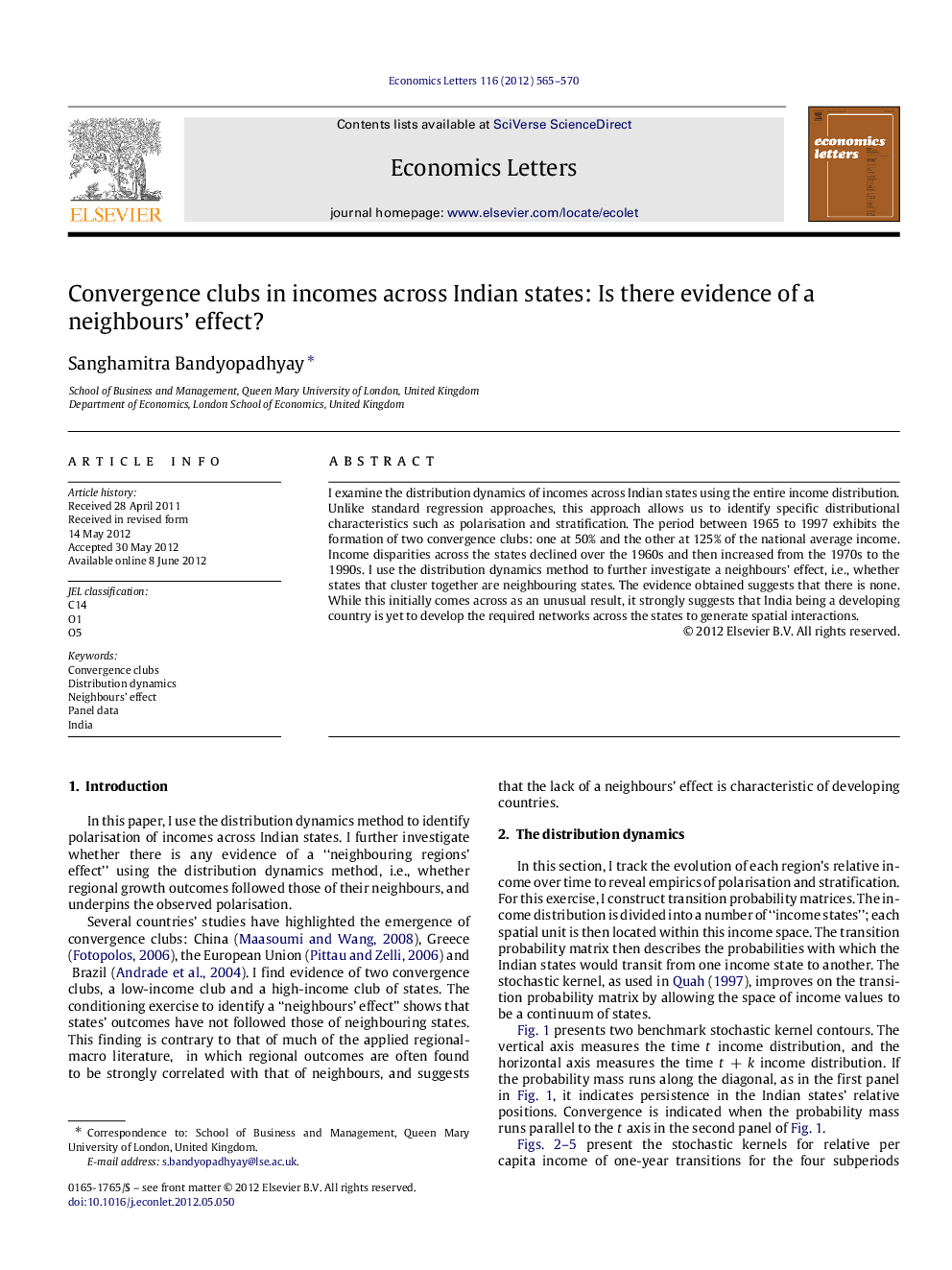| Article ID | Journal | Published Year | Pages | File Type |
|---|---|---|---|---|
| 5060278 | Economics Letters | 2012 | 6 Pages |
I examine the distribution dynamics of incomes across Indian states using the entire income distribution. Unlike standard regression approaches, this approach allows us to identify specific distributional characteristics such as polarisation and stratification. The period between 1965 to 1997 exhibits the formation of two convergence clubs: one at 50% and the other at 125% of the national average income. Income disparities across the states declined over the 1960s and then increased from the 1970s to the 1990s. I use the distribution dynamics method to further investigate a neighbours' effect, i.e., whether states that cluster together are neighbouring states. The evidence obtained suggests that there is none. While this initially comes across as an unusual result, it strongly suggests that India being a developing country is yet to develop the required networks across the states to generate spatial interactions.
⺠I find evidence of polarisation of incomes across Indian states. ⺠There is evidence of a low-income club and a high-income club of states. ⺠I further investigate whether regional growth outcomes followed those of their neighbours. ⺠There is no clear evidence found of a “neighbours' effect”. ⺠This is in contrast to the experience of developed countries.
